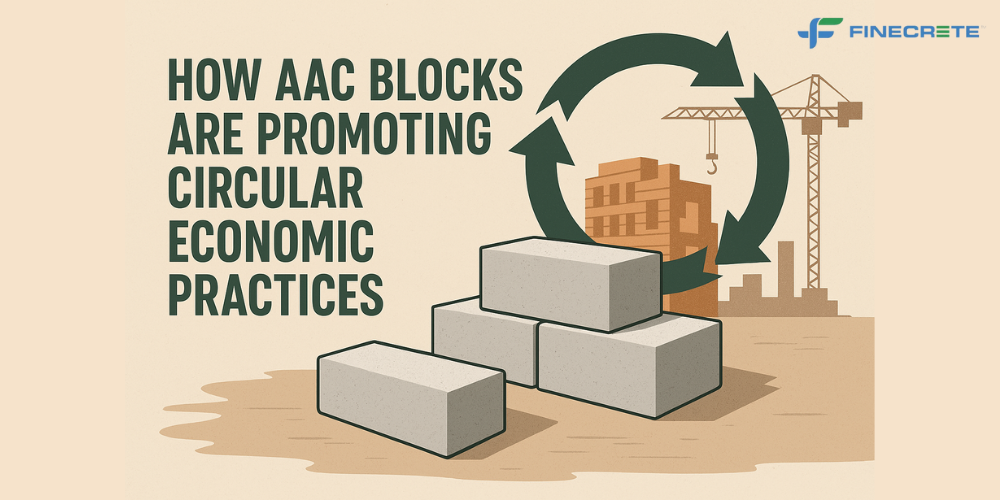These days, you can find the construction industry going for sustainable building materials like AAC blocks. These are helping to reduce environmental footprint as much as possible. AAC blocks are durable, energy-efficient and are bringing about a major change in how buildings are being constructed today. Find out how these are helping to promote circular economic practices across the world.
Encouraging the use of industrial by-products
Circular Economy is based on many important principles. One of its core principals is repurposing waste materials into valuable resources. AAC blocks are excellent from this perspective. Their main ingredient is fly ash, which is a by-product you can get from the combustion of coal. It is not disposed of in landfills and is repurposed into a construction material. Due to this reason, it can reduce industrial waste. There is less requirement for virgin raw materials. It helps to promote the conservation of planetary resources.
Less construction waste
AAC blocks are created with accurate dimensions. You will have less need to cut and trim these construction materials on-site. You can reduce wastage much more than when traditional concrete blocks or clay bricks are used. You can also easily crush and reuse offcuts and leftovers of AAC blocks in the production of new blocks. It can reduce material wastage further.
Helps to reduce carbon footprint
Circular economy practices focus on the conservation of energy. AAC blocks help to make buildings more energy-saving in nature. These have better thermal insulation properties, which helps to reduce energy consumption and the need for artificial cooling and heating. There is less need for energy, as compared to traditional clay bricks or concrete blocks. While manufacturing, you can reduce carbon footprint for this reason.
Can be recycled and reused
Circular economy focuses on the longevity of materials and recycling them. When buildings are demolished, AAC blocks obtained from them can be recycled or reused for the construction of new buildings. These can also be used in road construction as aggregates. With AAC blocks, there is better material recovery unlike traditional bricks where you have to deal with huge amount of non-recyclable debris.
Helps to conserve water
During the production of AAC blocks, there is need for much less amount of water. This helps with sustainable water management practices in construction, which happens to be one of the core principles of circular economy practices. Water that is used in the production of AAC blocks can also be recycled, which can promote resource efficiency and reduce wastage.
Low in maintenance
AAC blocks are resistant to fire, termites and moisture and can last for a longer time. There is less need for frequent repairs and maintenance when these blocks are used. It reduces material consumption over time. As these construction materials are durable, these can prolong the life cycle of buildings and support circular economy objectives.
As you can see, by promoting circular economic practices, these construction materials are helping the industry to abide by green building practices and make the world a better place.






